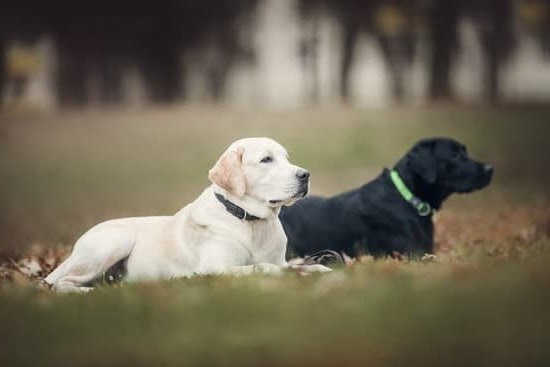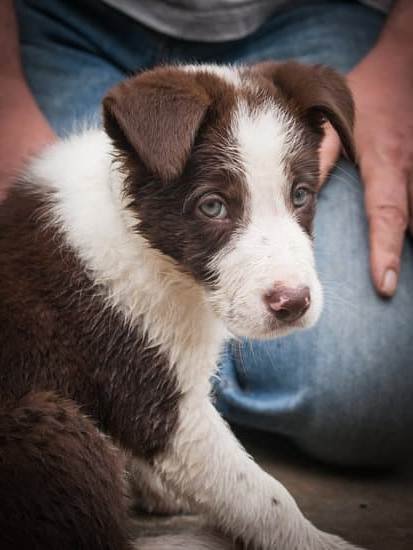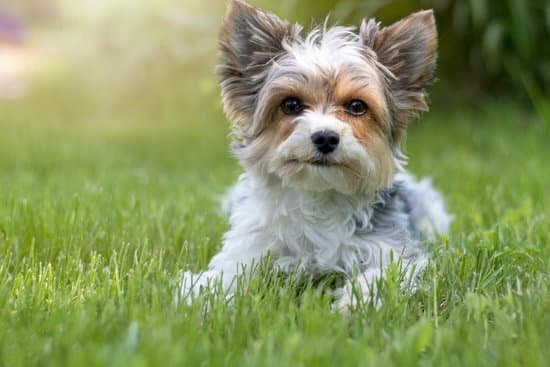Are you wondering how to train a dog from puppy pads to outside? Proper dog training is essential for a harmonious relationship between you and your furry friend. This article will offer valuable insights, tips, and techniques to help you make the transition from using puppy pads to having your dog do their business outside. Understanding the importance of this training process is the first step toward success.
Training your dog to go from puppy pads to outside is not just about teaching them where to relieve themselves. It’s also about establishing a routine, using positive reinforcement, and practicing patience and persistence. By following the advice in this article, you can create a consistent bathroom schedule, encourage outdoor bathroom behavior through rewards and praise, and effectively deal with setbacks and accidents along the way.
This article will also provide guidance on getting started with the transition process, as well as troubleshooting common challenges that may arise during training. Whether you’re a new pet parent or looking to improve your current training methods, understanding the importance of proper dog training sets the foundation for successful results in transitioning your dog from puppy pads to outside.
Understanding the Use of Puppy Pads
Puppy pads can be a helpful tool in potty training your dog, especially if you live in an apartment or have limited access to outdoor potty spots. However, it’s important to understand the best practices for using puppy pads and when they should be used.
First, it’s crucial to introduce your puppy to the puppy pads early on. Place the pad in a designated area of your home, preferably near the door that leads outside. This will help your dog understand that the ultimate goal is to go potty outside, but also provide a backup option for when they can’t hold it.
Here are some tips on how and when to use puppy pads:
- Use them for young puppies who may not yet have full control of their bladder and bowels.
- Use them during extreme weather conditions such as heavy rain or snow when taking your dog outside may be challenging.
- Use them for older dogs who may have difficulty holding their bladder for long periods of time.
It’s important to note that using puppy pads should only be a temporary solution while you work on transitioning your dog to go potty outside consistently. With proper training and patience, you can successfully teach your dog to relieve themselves outdoors.
Transitioning From Puppy Pads to Outside
Transitioning a dog from using puppy pads to going outside for bathroom breaks can be a challenging but rewarding process. It’s important to remember that every dog is different, and the transition may take some time. The key is to be patient, consistent, and to use positive reinforcement to encourage the desired behavior.
One effective technique for transitioning from puppy pads to outside is gradually moving the pads closer to the door over time. Start by moving the pads a few feet toward the door each day until they are right outside. This helps your dog make the association between going to the bathroom with going outside. Once the pads are outside, you can start slowly reducing their size until they are no longer needed.
Another useful tip is to establish a regular bathroom schedule for your dog. Take them outside first thing in the morning, after meals, before bedtime, and at regular intervals throughout the day. This routine will help your dog understand when it’s time to go outside and minimize accidents inside the house.
Using positive reinforcement is crucial during this transition period. Whenever your dog successfully goes to the bathroom outside, be sure to reward them with treats, praise, and affection. This will help reinforce good behavior and encourage them to continue going outside instead of using puppy pads indoors.
Overall, transitioning a dog from puppy pads to outside requires patience, consistency, and positive reinforcement. By following these tips and techniques, you can successfully train your dog to go potty outside.
| Techniques | Benefits |
|---|---|
| Gradually move puppy pads closer to door | Helps dog associate going potty with being outdoors |
| Establish a regular bathroom schedule | Minimizes accidents inside the house |
| Use positive reinforcement | Reinforces good behavior and encourages outdoor bathroom breaks |
Establishing a Routine
When it comes to training a dog from puppy pads to outside, establishing a consistent bathroom schedule is key. By creating a routine, you can help your dog understand when and where they should be going to the bathroom, making the transition smoother and more successful. Here are some tips and techniques for developing a consistent bathroom schedule for your furry friend:
1. Set specific times for bathroom breaks: Dogs thrive on routine, so it’s important to take them out at the same times every day. Typically, puppies need to go out after waking up, after eating or drinking, and before bedtime. As they get older, they can usually hold their bladder for longer periods.
2. Use verbal cues: When it’s time for your dog to go outside, use a consistent verbal cue like “go potty” or “do your business.” This will help them associate the cue with the act of going to the bathroom.
3. Monitor their behavior: Pay attention to your dog’s behavior and body language. If they start sniffing around or circling in a specific area, it might be a sign that they need to go out.
Remember that consistency is key when establishing a routine for your dog. It may take time for them to adjust to the new schedule, but with patience and persistence, you can successfully train them to go from puppy pads to outside.
By following these tips and being patient with your furry companion, you can effectively transition from using puppy pads indoors to having them do their business outside. With consistency and positive reinforcement, you’ll soon have a well-trained pup who knows exactly where and when they should be going potty.
Positive Reinforcement
When it comes to transitioning a dog from using puppy pads to going outside, positive reinforcement is a key component. By using rewards and praise, you can encourage your furry friend to exhibit the desired behavior of going to the bathroom outdoors. This method focuses on the idea that by rewarding good behavior, you are more likely to see it repeated in the future.
One effective way to use positive reinforcement in this training process is by offering your dog a treat immediately after they successfully go to the bathroom outside. Choose high-value treats that your dog loves and make sure to give it to them as soon as they are done. This helps create a positive association between going outside and receiving something they enjoy.
In addition to treats, verbal praise and physical affection can also be powerful tools for encouraging outdoor bathroom behavior. When your dog does their business outside, make sure to shower them with praise, petting, and enthusiastic words like “Good boy.” or “Good girl.” This positive attention will reinforce their understanding that going outside is the right place to go potty.
Remember that consistency is key when using positive reinforcement, so make sure everyone in your household follows the same reward system and uses the same verbal cues during this training process.
| Positive Reinforcement Method | Benefits |
|---|---|
| Offering treats immediately after successful outdoor bathroom behavior | Creates a positive association with going outside |
| Using verbal praise and physical affection after outdoor potty breaks | Reinforces understanding of proper bathroom behavior |
Patience and Persistence
Understanding the Process
Training a dog from puppy pads to outside can be a challenging process, and it’s important to understand that setbacks and accidents are a normal part of the transition. Dogs may have accidents indoors even after they seem to have mastered outdoor potty training, and this is completely normal. It’s crucial for dog owners to remain patient and persistent throughout the process, as consistency is key in successful training.
Addressing Accidents
When accidents happen during the transition from puppy pads to outside, it’s essential not to scold or punish the dog. Instead, clean up the accident thoroughly without making a fuss, as this will prevent the dog from associating going potty with negative consequences. Additionally, focus on reinforcing positive behavior by providing rewards and praise when the dog successfully goes potty outside. This will help them understand where they should be going potty.
Seeking Professional Help
If despite all efforts, a dog continues having accidents inside after being trained on puppy pads and then transitioning outside, it may be necessary to seek professional help from a veterinarian or certified dog trainer. There could be underlying medical issues or behavioral problems that need to be addressed in order for the transition to be successful. It’s important not to lose hope and remain committed to finding solutions that work for both the owner and the dog.
Getting Started
One of the first steps in transitioning a dog from using puppy pads to going outside is to start by identifying a designated potty area outdoors. This could be a specific spot in your yard or a nearby park where you can take your dog consistently for bathroom breaks. By establishing this outdoor potty area, you are providing your dog with a clear understanding of where they should go when they need to relieve themselves.
Introducing the Outdoors
Once you have identified the outdoor potty area, it’s important to start introducing your dog to this new environment. Take your dog outside frequently, especially after meals, playtime, and naps. Use verbal cues such as “go potty” or “do your business” to encourage them to use the bathroom outside. Be patient and give them ample time to sniff around and find the right spot before they go.
Gradual Reduction of Puppy Pads
As your dog becomes more comfortable with going outside, you can begin reducing the number of indoor puppy pads gradually. If you have been using multiple pads indoors, start by removing one at a time over the course of several days. This gradual transition will help your dog understand that outdoor bathroom breaks are now preferred. Remember to praise and reward your dog every time they successfully go outside as positive reinforcement is key in reinforcing this new behavior.
By following these initial steps and being consistent with the process, you can effectively train your dog from relying on puppy pads to confidently using the outdoors for their bathroom needs. Remember that patience and persistence are key factors in this training process, and celebrating each successful outdoor potty break will ultimately lead to long-term success for both you and your furry friend.
Troubleshooting
Transitioning a dog from using puppy pads indoors to exclusively going outside for bathroom breaks can be a challenging process. While many dogs can make the transition smoothly, there are common challenges that pet owners may encounter along the way. It’s important to understand these challenges and have a plan in place to address them effectively.
One common challenge when transitioning a dog from puppy pads to outside is resistance or reluctance to go outside. Some dogs may become so accustomed to using the puppy pads indoors that they are hesitant to go outside, especially in unfamiliar or new environments. To address this, it’s important to gradually introduce the outdoor environment to the dog. This can be done by starting with short outdoor trips and gradually increasing the duration as the dog becomes more comfortable.
Another challenge pet owners may face while transitioning their dog from puppy pads to outside is accidents inside the home. Accidents are part of the training process, but frequent accidents can be frustrating for pet owners. One solution is to closely monitor the dog’s behavior and take them outside frequently, especially after meals and naps. Additionally, thoroughly clean any indoor accidents with an enzymatic cleaner to remove any lingering scent that may encourage repeat incidents.
Lastly, some dogs may experience anxiety or fear when going outside for bathroom breaks, especially if they had negative experiences in outdoor environments in the past. In these cases, it’s important for pet owners to create a positive association with going outside by using treats, praise, and reassurance. It may also be helpful to work with a professional dog trainer or behaviorist who can provide guidance on addressing anxiety-related issues during the transition process.
Overall, transitioning a dog from using puppy pads inside to exclusively going outside for bathroom breaks requires patience, consistency, and understanding of common challenges. By addressing these challenges effectively and being persistent in training efforts, pet owners can successfully train their dogs to go outside for bathroom breaks.
Conclusion
In conclusion, training a dog from puppy pads to outside can be a challenging process, but with the right techniques and consistent effort, it is definitely achievable. Understanding the importance of proper dog training is crucial in this transition, as it requires patience, persistence, and positive reinforcement. By establishing a routine and using rewards and praise to encourage outdoor bathroom behavior, pet owners can successfully teach their dogs to go potty outside.
Transitioning from puppy pads to outside requires a gradual process and plenty of understanding. It’s important for pet owners to be patient and persistent when dealing with setbacks and accidents during the training process. By staying consistent in their approach and providing encouragement, dog owners can effectively train their pets to use the great outdoors as their bathroom area.
As pet owners celebrate their success in training their dogs from puppy pads to outside, they will also enjoy the results of their hard work. The freedom from having to constantly clean up after their pets indoors will make both the owner and the pet happier. With these tips and techniques in mind, dog owners can take on the challenge of transitioning their furry friends from puppy pads to enjoying the outdoors for bathroom breaks.

Welcome to the blog! I am a professional dog trainer and have been working with dogs for many years. In this blog, I will be discussing various topics related to dog training, including tips, tricks, and advice. I hope you find this information helpful and informative. Thanks for reading!





